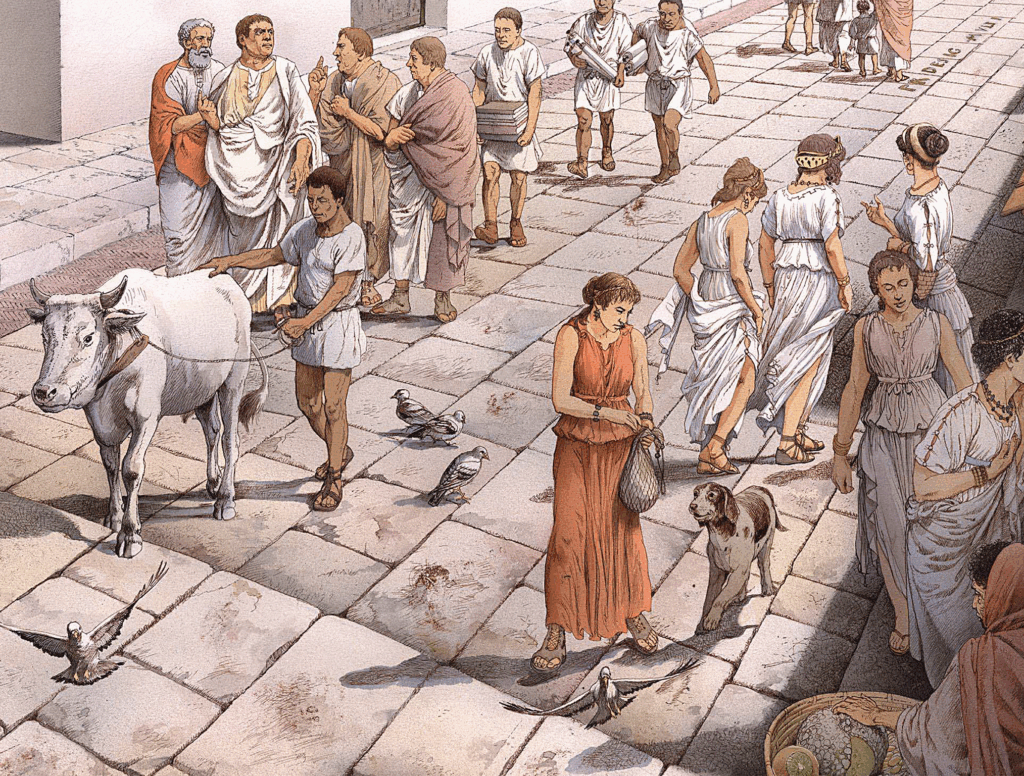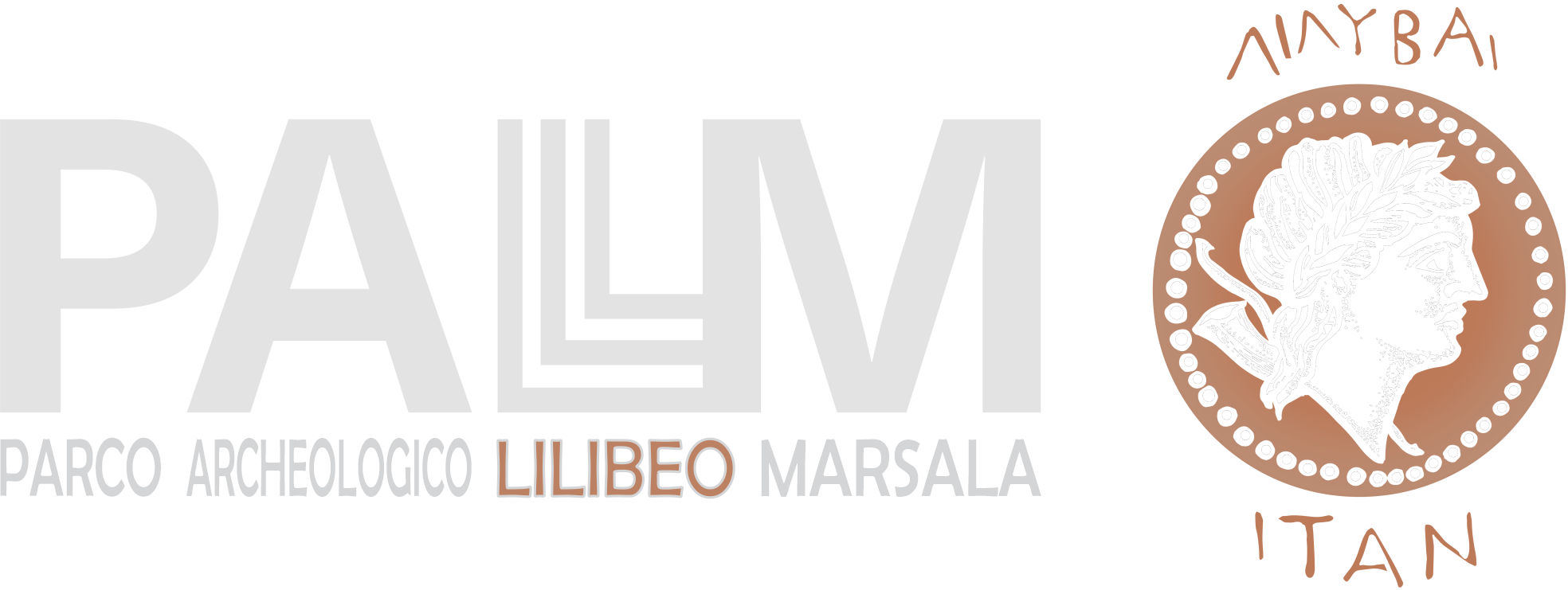LA PLATEIAE AELIA


🇬🇧 Daily life on the Plateia Aelia.
🇮🇹 LA PLATEIA AELIA
La vita quotidiana pubblica durante l’età imperiale romana si svolgeva principalmente negli spazi aperti della città, come il foro o le vie più importanti. La plateia “Aelia” prende il nome dalla grande iscrizione pubblica ivi rinvenuta, che ricorda il restauro della strada: P STERTINIUS / THREPTUS / PLATIAM AELIAM / SVA PECUNIA / STRAVIT.
Già dalla prima fase (età tardo-repubblicana/alto-imperiale) era certamente pedonale, chiusa al passaggio dei carri, e fiancheggiata da marciapiedi, fontane e canalette rivestite in mattoncini (opus spicatum). Infatti sulle lastre non sono stati trovati solchi dei carri e, inoltre, la presenza di gradini, come quello raffigurato in primo piano, che servivano a superare la pendenza verso il mare, ne avrebbe sicuramente impedito il passaggio. Al periodo tardo repubblicano risale un’iscrizione latina, originariamente realizzata con lettere in bronzo, oggi perdute, incassate in appositi incavi, che menziona il magistrato, forse un legato propretore, che curò la prima pavimentazione della strada: PR. DESIG. [EX] MULTI[SJ, “il pretore designato grazie ai proventi delle tasse”.
🇬🇧 THE ROMAN IMPERIAL STREET
Daily public life during the Roman Imperial Age mainly revolved around the open spaces of the city, such as the forum or the main roads. The plateia “Aelia” is so called for the great public inscription here founded, wich mentions the restoration of the street: P STERTINIUS / THREPTUS / PLATIAM AELIAM / SUA PECUNIA / STRAVIT.
From the first phase (Late Republican/Early Imperia! Age) it was a pedestrian street, closed to the passage of chariots, and lined with sidewalks, fountains and canals covered with bricks (opus spicatum). On the paving stones were not founded signs of chariots and moreover, the presence of steps – like the one represented in the foreground – created to negotiate the slope down towards the sea, would have certainly made it relatively impractical for most traffic.
A Latin inscription (Late Republican Age), originally in bronze,found on some stone slabs of the street, reveal that the paving was commissioned by an elected magistrale, perhaps a Legatus propretore, who takes care the first pavement of the street: PR. DESIG. [EX] MULTI[S], “the praetor designatus thanks to the taxis earn”.
